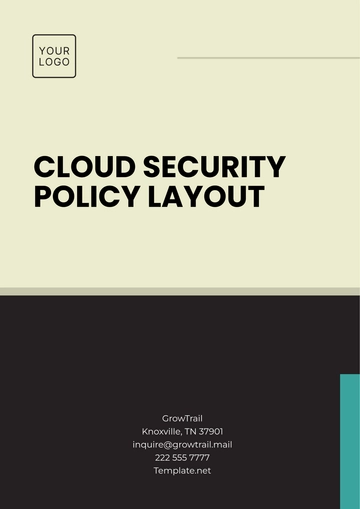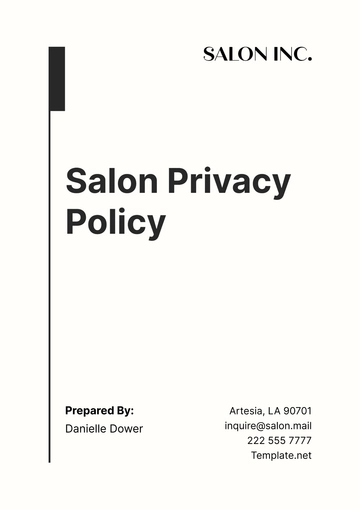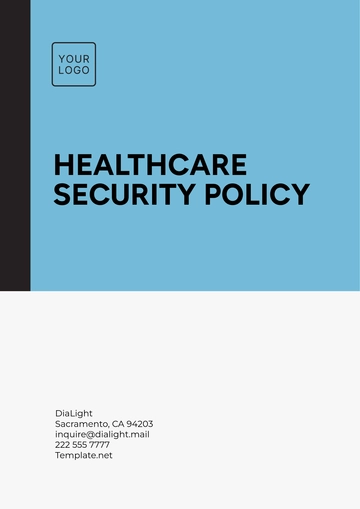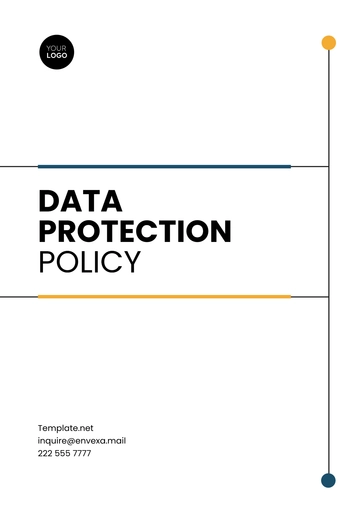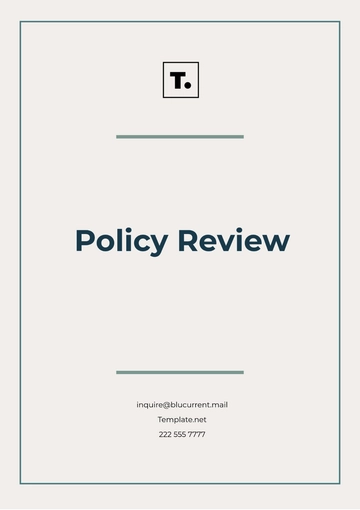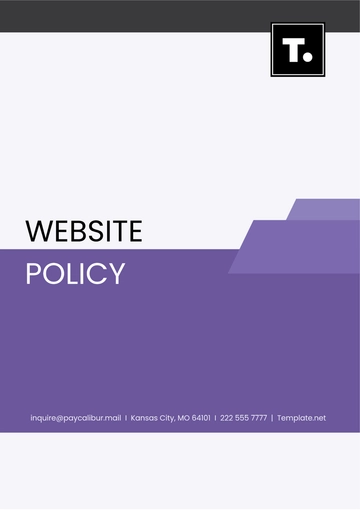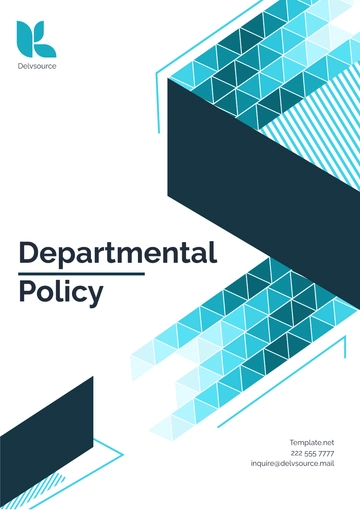Free Nursing Home Discharge Planning Policy

I. Introduction
A. Purpose
The purpose of this Nursing Home Discharge Planning Policy is to establish guidelines and procedures for the safe and effective discharge of residents from [Your Company Name]. It aims to ensure that residents receive appropriate care and support during their transition to their next level of care, whether it be home, another healthcare facility, or another appropriate setting.
B. Scope
This policy applies to all residents of [Your Company Name] who are being discharged from the facility, regardless of the reason for discharge or destination.
II. Discharge Planning Process
A. Assessment
Upon admission to [Your Company Name], each resident's discharge needs will be comprehensively assessed by the interdisciplinary team. This team includes nursing staff, social workers, therapists, and physicians, who collaborate to gather relevant information about the resident's medical condition, functional abilities, cognitive status, social support, and preferences for post-discharge care.
The assessment process involves gathering data through various means, including interviews with the resident and their family, review of medical records, and observation of the resident's activities of daily living. The gathered information is documented in the resident's electronic health record (EHR) for reference throughout the discharge planning process.
To facilitate the assessment process, [Your Company Name] utilizes standardized assessment tools and protocols recommended by regulatory bodies and professional organizations, such as the Minimum Data Set (MDS) for long-term care facilities and standardized functional assessment tools.
The interdisciplinary team collaborates to analyze the assessment data and identify the resident's strengths, needs, and goals, which form the basis for developing an individualized discharge plan tailored to the resident's unique circumstances and preferences.
Assessment Components | Description |
|---|---|
Medical Condition | Evaluate the resident's current medical diagnoses, treatments, and prognosis. |
Functional Abilities | Assess the resident's ability to perform activities of daily living (ADLs), mobility, and self-care tasks. |
Cognitive Status | Determine the resident's cognitive function, including memory, orientation, and decision-making abilities. |
Social Support | Identify the resident's social support network, including family members, caregivers, and community resources. |
Preferences for Post-Discharge Care | Discuss the resident's preferences regarding their post-discharge living arrangements, healthcare providers, and treatment options. |
B. Development of Discharge Plan
Based on the assessment findings, an individualized discharge plan is developed for each resident in collaboration with the resident, their family, or designated decision-maker. The discharge plan outlines the specific services, interventions, and support needed to facilitate a safe and successful transition from [Your Company Name] to the next level of care.
The development of the discharge plan involves setting realistic and achievable goals that address the resident's medical, functional, psychosocial, and environmental needs. These goals are based on evidence-based practice guidelines, resident preferences, and available community resources.
The discharge plan includes the following components:
Medical Care: Specify any ongoing medical treatments, medications, or follow-up appointments required after discharge.
Rehabilitation Services: Outline the need for physical therapy, occupational therapy, speech therapy, or other rehabilitative services to support the resident's recovery and functional independence.
Social Services: Identify any social work interventions, counseling services, or community referrals needed to address the resident's psychosocial needs and ensure a supportive living environment post-discharge.
Home Care Services: Arrange for home health services, personal care assistance, or medical equipment needed to facilitate the resident's transition to home or community-based care.
Caregiver Support: Provide education and training for family caregivers or other informal supports involved in the resident's care to ensure they have the necessary skills and resources to support the resident's needs post-discharge.
The interdisciplinary team documents the discharge plan in the resident's EHR and communicates the plan to all relevant stakeholders, including the resident, their family, healthcare providers, and community agencies involved in the transition process.
III. Discharge Planning Documentation
A. Discharge Summary
A comprehensive discharge summary will be completed for each resident upon discharge from [Your Company Name]. This summary serves as a vital communication tool to ensure continuity of care and coordination between [Your Company Name] and the resident's next level of care provider, whether it be another healthcare facility, home health agency, or primary care physician.
The discharge summary includes the following key components:
Component | Description |
|---|---|
Resident Information | Name, date of birth, medical record number, and contact information |
Reason for Admission | Brief summary of the resident's reason for admission to [Your Company Name] |
Medical History | Summary of relevant medical history, including diagnoses, treatments, and surgical procedures |
Hospital Course | Overview of the resident's hospitalization, including procedures performed, complications, and outcomes |
Medications | List of medications prescribed during the resident's stay, including dosages, frequencies, and indications |
Functional Status | Assessment of the resident's functional abilities, mobility, and self-care skills |
Discharge Plan | Summary of the resident's individualized discharge plan, including recommended follow-up care, services, and referrals |
Instructions and Education | Detailed instructions for the resident and their caregivers regarding medications, treatments, activities of daily living, and any necessary precautions or restrictions |
Follow-Up Appointments | Schedule of recommended follow-up appointments with healthcare providers, including dates, times, and locations |
Contact Information | Contact information for [Your Company Name] and relevant healthcare providers for further assistance or questions |
The discharge summary is prepared by the resident's attending physician or other qualified healthcare provider responsible for their care. It is reviewed and approved by the interdisciplinary team to ensure accuracy and completeness.
Copies of the discharge summary are provided to the resident, their primary care physician, and any other healthcare providers involved in their post-discharge care. The summary is also filed in the resident's permanent medical record at [Your Company Name] for future reference.
B. Communication
Clear and timely communication is essential throughout the discharge planning process to ensure coordination of care and smooth transitions for residents of [Your Company Name].
[Your Company Name] employs various communication strategies to facilitate effective communication with residents, families, caregivers, and healthcare providers, including:
Verbal Communication: Regular meetings and discussions between members of the interdisciplinary team to review the resident's progress, address concerns, and coordinate discharge planning efforts.
Written Communication: Documentation of discharge planning activities, including assessments, care plans, and progress notes, in the resident's EHR. Written instructions and educational materials provided to residents and their caregivers regarding post-discharge care and follow-up instructions.
Electronic Communication: Utilization of electronic health record systems, secure messaging platforms, and telehealth technologies to communicate with external healthcare providers and coordinate post-discharge care arrangements.
Family Meetings: Scheduled meetings with residents and their families to discuss discharge plans, address questions or concerns, and ensure alignment with the resident's preferences and goals of care.
[Your Company Name] emphasizes the importance of collaborative communication and encourages active participation from residents, families, and caregivers in the discharge planning process. Any changes to the discharge plan or unexpected events during the transition process are promptly communicated and addressed to ensure continuity of care and patient safety.
IV. Quality Assurance
A. Monitoring and Evaluation
[Your Company Name] is committed to continuously monitoring and evaluating the effectiveness of its discharge planning process to ensure the delivery of high-quality care and positive outcomes for residents.
The monitoring and evaluation activities include:
Readmission Rates: Tracking and analyzing readmission rates for discharged residents to identify trends, patterns, and contributing factors.
Patient Satisfaction Surveys: Conducting regular surveys to assess resident and family satisfaction with the discharge planning process, communication, and overall care experience.
Clinical Outcomes: Monitoring clinical outcomes and functional status improvements for residents post-discharge, including reductions in hospitalizations, improved medication adherence, and enhanced quality of life.
Compliance with Regulations: Ensuring compliance with regulatory requirements and standards related to discharge planning, documentation, and communication.
Data collected through monitoring and evaluation activities are reviewed by [Your Company Name]'s quality improvement committee and used to identify areas for improvement and implement targeted interventions to enhance the discharge planning process.
B. Continuous Improvement
Based on the findings of monitoring and evaluation activities, [Your Company Name] implements continuous quality improvement initiatives to optimize the discharge planning process and enhance patient outcomes.
Continuous improvement efforts may include:
Staff Education and Training: Providing ongoing education and training for staff members involved in discharge planning to ensure proficiency in assessment techniques, communication skills, and best practices.
Process Standardization: Standardizing discharge planning procedures and documentation templates to promote consistency, efficiency, and adherence to evidence-based guidelines.
Collaboration with Community Partners: Strengthening partnerships with community agencies, healthcare providers, and other stakeholders to improve access to post-discharge services and resources.
Technology Integration: Leveraging technology solutions, such as electronic health records, telehealth platforms, and data analytics tools, to streamline communication, enhance coordination of care, and facilitate remote monitoring of discharged residents.
[Your Company Name] encourages feedback from residents, families, and staff members to inform continuous improvement efforts and ensure that the discharge planning process is responsive to evolving needs and preferences.
V. References
This Nursing Home Discharge Planning Policy is guided by relevant laws, regulations, and guidelines governing discharge planning in healthcare facilities. The following references serve as the foundation for the development and implementation of this policy:
Reference | Description |
|---|---|
Nursing Home Regulations | Federal and state regulations governing nursing homes, including requirements for discharge planning, resident rights, and quality of care standards. |
CMS Conditions of Participation | Centers for Medicare & Medicaid Services (CMS) Conditions of Participation for long-term care facilities, including regulations related to discharge planning, resident assessments, and care coordination. |
Minimum Data Set (MDS) | Standardized assessment tool used by nursing homes to assess residents' health status, functional abilities, and care needs, as required by CMS regulations. |
Professional Practice Guidelines | Evidence-based guidelines and recommendations from professional organizations, such as the American Medical Directors Association (AMDA) and the National Association of Social Workers (NASW), regarding best practices for discharge planning and care transitions in long-term care settings. |
VI. Definitions
The following definitions are provided to clarify key terms and concepts used in this Nursing Home Discharge Planning Policy:
Term | Definition |
|---|---|
Discharge Planning | The process of coordinating and arranging for the safe transition of a resident from a nursing home to their next level of care, including home, another healthcare facility, or community-based services. |
Interdisciplinary Team | A team of healthcare professionals from different disciplines, such as nursing, social work, therapy, and medicine, who collaborate to assess residents' needs, develop care plans, and coordinate services. |
Electronic Health Record (EHR) | Digital record of a resident's medical history, diagnoses, treatments, medications, and other healthcare information, accessible to authorized healthcare providers for continuity of care. |
Post-Discharge Care | Healthcare services, treatments, and support provided to a resident after discharge from a nursing home, aimed at promoting recovery, independence, and quality of life in the community setting. |
Caregiver | An individual, such as a family member or friend, who provides unpaid assistance and support to a resident with activities of daily living, medical care, and emotional support. |
VII. Dissemination and Implementation
[Your Company Name] is responsible for disseminating and implementing the Nursing Home Discharge Planning Policy to all relevant stakeholders, including staff members, residents, families, and external healthcare providers.
The following steps will be taken to ensure effective dissemination and implementation of the policy:
Staff Training: All staff members involved in the discharge planning process will receive training on the requirements and procedures outlined in the policy. This training will include instruction on assessment techniques, documentation standards, communication strategies, and regulatory compliance.
Policy Distribution: A copy of the Nursing Home Discharge Planning Policy will be made available to all staff members electronically via [Your Company Name]'s intranet or other internal communication platforms. Printed copies will also be provided upon request.
Acknowledgement and Signature: Staff members will be required to review the policy and acknowledge their understanding and commitment to compliance with its provisions. This acknowledgment will be documented electronically or through signed acknowledgement forms.
Ongoing Education: [Your Company Name] will provide ongoing education and training opportunities for staff members to reinforce key concepts, address emerging issues, and promote continuous improvement in discharge planning practices.
Resident and Family Education: Residents and their families will receive education and information about the discharge planning process, their rights, and available resources to support their transition to post-discharge care settings.
Quality Monitoring: [Your Company Name] will establish mechanisms for monitoring compliance with the policy, identifying areas for improvement, and addressing any deviations from established procedures.
Feedback Mechanisms: [Your Company Name] encourages feedback from staff, residents, families, and other stakeholders regarding the effectiveness of the discharge planning process and opportunities for improvement. Feedback will be used to inform policy revisions and quality improvement initiatives.
- 100% Customizable, free editor
- Access 1 Million+ Templates, photo’s & graphics
- Download or share as a template
- Click and replace photos, graphics, text, backgrounds
- Resize, crop, AI write & more
- Access advanced editor
Ensure smooth transitions with the Nursing Home Discharge Planning Policy Template from Template.net. Editable and customizable, it establishes guidelines for coordinating resident discharges with care and efficiency. Tailor it effortlessly using our Ai Editor Tool for personalized policies. Streamline discharge processes and enhance resident care with this essential template.
You may also like
- HR Policy
- Restaurant Policy
- Company Policy
- Accounting Policies and Procedures
- Website Policy
- Privacy Policy
- Safety Policy
- School Policy
- IT and Software Policy
- Law Firm Policy
- Construction Policy
- Interior Design Policy
- Travel Agency Policy
- Education Academic Policy
- Security Policy
- Real Estate Policy
- Expense Policy
- Software Policy

